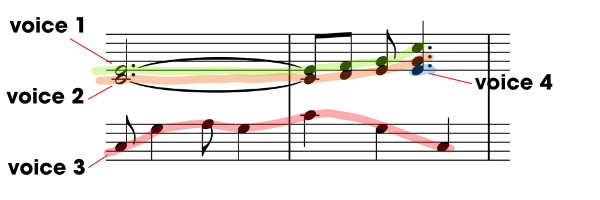When we’re working on repertoire there is no doubt that there are some sections in your piece that you can already play. However, it’s likely that you’ll also have sections that you struggle with. This is when we get stuck.
These challenging sections is where you need to spend your time. Of course, this is tricky in itself. Initialy you’ll find it difficult and this doesn’t always translate in to fun.

The good thing is that mastering these tricky sections gives you two things. First, a sense of satisfaction. Well done! The second, and not thought about as much, is you’ve improved some aspect of your technique. This means that next time you find a similar passage the mountain to climb isn’t as steep.
There are a few things that I recommend you try which will help to get you through these difficult times.
Minimise the problem
Make sure your fingering is optimised
Practice hands separately
Understand each voice on it’s own
There are other tools to have in your toolbox but these are a great starting point.
Tip #1: Minimise the Problem
It’s likely that there are some sections in your music you can play. Especially if you’ve already been playing the piece for a while. However, if you still can’t play any of it, chuck it and find something more manageable.
When I say ‘minimise’, we want to pinpoint the problem. No point in wasting time practicing 8 bars/measures of music if the problem only exists across 2 beats. The problem might only be 1 beat or less.
Once you’ve poinpointed the problem focus on that section and move on to the next steps.
Tip #2: Optimise Your Fingering
Everyone’s hand are different. This means that we shouldn’t all be using the same fingering. Of course, there is plenty of fingering that works for everyone. However, sometimes we need to find something that suits our hands better.
A couple of points about fingering.
When you are writing your fingering in your music (if you’re not, that’s the first point), try to play the section slowly and at the speed you eventually want to play it. I know you’re thinking “I can’t play it and that’s why I’m stuck so why would I play it at full speed?”
Looking back at tip 1. Don’t try and play a long passage at full tempo. Just the tiny section you’ve pinpointed.
Sometimes if we play the problem section too slowly, almost any fingering will work. Bring it up to speed and the fingering might not be as effective.
The second point is, don’t always accept the printed fingering in your book. They are only suggestions. Experiment with other fingerings to find one you can work with then stick to it at all times.
Tip #3: Separate Your Hands
You want each hand to be creating beautiful music all the time. Don’t just think that the right hand has the tune so the left can take it easy.
Work each hand on it’s own for a while. Making each hand sound as good as possible and feeling easy to play. At that point bring them back together and work slowly.
Make sure you have a deep understanding of how the hands work as a team. e.g. are they both playing at the same time or not? Is one hand in the black key area and the other isn’t etc.
Tip #4: Fully Understand Each Voice
Think of a voice in piano music as one line of music. You might look at your music and there could be three notes playing at the same time. Each one of those notes is a voice.
Take some time to play each voice on it’s own. For example, if your right hand is playing a bar of 2 note chords. Play only the lower notes and learn that. Then play the upper notes and learn that too. Then put them back together. Think of it like the hands apart practice but on steroids.
When you separate the voices make sure to use the fingering you have marked in. Don’t change the fingering when doing this exercise.

In the image above (a couple of bars from Pleasant Moments by Scott Joplin) I have highlighted each voice. If I was working on this piece I would practice each line until I knew them really well.
After that I would mix and match the voices. Voice 1 with 2, then voice 1 with 3 then 1 with 4. 2 with 3 then 2 with 4 etc. You get the idea. Then I would start putting it all together again.
In Summary
Don’t spend all your time practicing the bits your good at. Spend a lot longer on the bits you can’t play and you’ll finish your music faster.
Use the tips above to help you through and then you can focus on other things.

